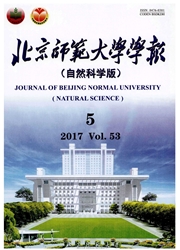

 中文摘要:
中文摘要:
城市网络已经成为分析城市群内部城市之间的相互作用及其流动方式的重要方法.利用传统地理学引力模型法以及信息时代的百度指数法绘制城市网络,划分网络中的主干结构.并对比分析京津冀城市群中的网络结构特征和城市层级分布.研究发现:百度指数网络的主干结构呈现出以北京为中心的伞型模式,引力模型网络则呈现出以北京、天津为双核心的发散模式;引力模型网络相对稳定,随时间的增长变化较小,而百度指数网络对时间和城市功能定位的响应更加明显;根据各城市在不同模型中的总联系值占比差,将城市群内城市分为虚拟空间指向型城市(石家庄、保定、秦皇岛、张家1:3、承德),实体空间指向型城市(天津、唐山、廊坊、沧州),以及虚实均衡型城市(北京、邯郸、邢台、衡水).
 英文摘要:
英文摘要:
Urban network has become important to analyze interactions and flow patterns among urban agglomerations. Distribution of urban grade and network structure characteristics were compared between traditional geographical gravity model and information age method of Baidu index for urban network of the Jing- Jin-Ji urban agglomeration. Comparative study found that the center of Beijing in Baidu index network presents a starlike diffusion mode. Gravity model network exhibits a diffusion model with Beijing and Tianjin as two cores The gravity model network has little change in different time nodes, while response of Baidu index network to time and function of city is more obvious. According to radio difference in total connection value of cities in the two models, cities can be classified as virtual space oriented cities (Shijiazhuang, Baoding, Qinhuangdao, Zhangjiakou, Chengde), physical space oriented cities (Tianjin, Tangshan, Langfang, Cangzhou), and physical virtual balanced cities (Beijing, Handan, Xingtai and Hengshui).
 同期刊论文项目
同期刊论文项目
 同项目期刊论文
同项目期刊论文
 期刊信息
期刊信息
